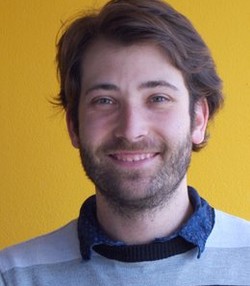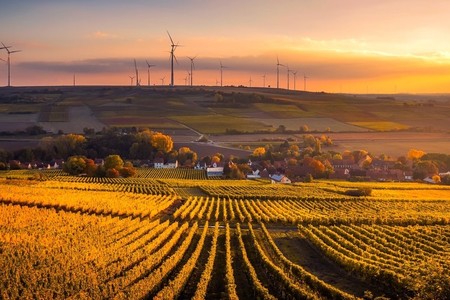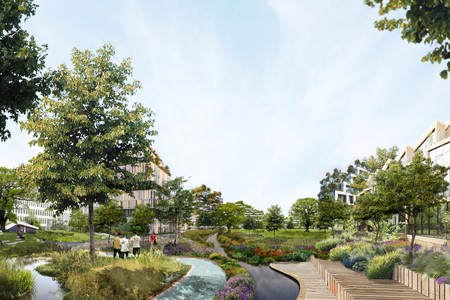This month is packed with exciting news to inspire and keep you updated on the latest events. It’s a look into a brighter future from alternative energy sources to regenerative agriculture and innovative recycling technologies, including the latest breakthrough agreements made during COP26. Each development brings us closer to the milestones needed to cut global emissions.
Several commitments were made last November during Glasgow’s COP26, including the Global Coal to Clean Power initiative. More than 40 countries committed to quitting coal and the Global Methane Pledge with more than 90 nations committing to reduce methane emissions by 30% before 2030.
Altogether the first five goals set - called the 'Glasgow Breakthroughs' - cover more than 50% of global emissions. This is all amazing news for a better future. Most importantly, they show us that change is happening. Nevertheless, even if all the COP26 pledges are met, the planet is on track to warm by at least 2.1°C. This reminds us of the need for increasing systemic innovations starting from the personal level. The urge is to act now, starting locally, “Don't think globally, instead think, what can I do?” say some of the leaders at COP26.
Follow the quarterly updates of tomorrow’s sustainability news today, by subscribing to the Tomorrow Times.
Energy & Environment

- Minerals for climate action. Solar panels, wind turbines, electric cars and hydrogen fuel cells require metal. The World Bank estimates that about three billion tonnes of metals like graphite, lithium and cobalt will be needed by 2050 to supply enough systems to meet the Paris Climate Agreement. Our current relationship with the mining processes of metals must change.
- COP26 land use and agriculture outcomes. Commitments to support regenerative agriculture and smallholder farmers have been made. They strive to make climate-resilient, sustainable agriculture the most attractive and widely adopted option for farmers everywhere by 2030. Among the others, the Leaders’ Declaration on Forests and Land Use includes 141 signatories that cover more than 90% of the world’s forests with the objective to halt forest-loss by 2030.
- Agroforestry waste to support the energy transition. 300 million metric tons of oil equivalent could be produced every year from lignocellulosic biomass in agricultural and forestry waste. This is equivalent to roughly 2% of the energy consumed globally per year. Lignocellulose waste could contribute to the energy transition.
Business & Economy

- The Netherlands farming for the future. The US is the world’s biggest agricultural exporter, but the Netherlands takes 2nd place. Farming without unnecessary waste, toxins and with conscious anticipation of our changing planet are some of the elements that have brought such a small country to this goal. Here are some ways the Dutch are farming for the future.
- COP26 could be a watershed in greening the financial sector. The absence of a clear, generally agreed framework for reporting corporate activity’s climate impact has been featured as a big issue impeding progress toward greening the business sector. Erkki Liikanen announced the creation of the International Sustainability Standards Board (ISSB). It “will help investors understand how companies are responding to ESG - environmental, social, governance - issues, like climate, to inform capital allocation decisions.”
- Mainstreaming transparency. CDP’s 2021 company scores are out. CDP is an international non-profit organization that helps companies and cities disclose their environmental impact. In 2021, a record-breaking 13,000+ companies representing over 64% of global market capitalization revealed through CDP – 35% more than last year and over 141% more than when the Paris Agreement was signed in 2015 .
Science, Technology & Design

- New plastic separation technology is a breakthrough recycling process. Researchers at Aarhus University have developed a new camera technology that can differentiate between 12 different types of plastics using machine learning on short wave infrared hyperspectral data.
- How to keep up with and set new technology trends. To keep their companies on the cutting edge, tech leaders must provide the time for their team members to engage in ongoing learning and development and the tools they need to do so. 16 members of Forbes Technology Council suggest ways tech teams can keep up with new technology trends.
- A journey towards the future of fashion design. “It has to become natural that you want to know what you are really buying and what is behind that product”. Fashion industries are ready to change, to be more sustainable and responsible. A new book from the Ellen MacArthur Foundation offers a creative lens to navigate radical transformation for fashion products. “It’s an inspirational, creative attempt to bring our principles to life through examples in different parts of the industry, from H&M to Gucci. It’s relevant for everyone” - MacArthur says.
Urban Environment

- Smart Cities top news stories of 2021. Among these Bloomberg names 50 finalist cities for 2021 Global Mayors’ Challenge and Saudi Arabia unveils its vision for a city without cars and streets.
- Overcooling, a waste of energy and source of discomfort. A recent study of UC Berkeley in collaboration with the University of Sydney found that offices are too cold and routinely cooled beyond the comfort requirements. Simpler, personalized comfort systems like fans may simultaneously increase comfort for all occupants and reduce energy use. Here’s a summary of the research and the full open-access paper published in Nature.
- The future of indoor environmental quality in “green” buildings. Despite indoor environmental quality (IEQ) holding a foundational place in green building practice, evidence shows that the performance of green-rated buildings remains inconsistent. A recently published open-access paper identifies limitations and practical opportunities for improving rating tools and certification schemes through critical scientific and practical insights that could help realize effective healthy buildings.
Unexpected & Intriguing

- The most powerful telescope can see into the past. James Webb Space is the most powerful telescope NASA ever sent to space. Designed to see the first epoch of galaxies born after the Big Bang. Learn how it works.
- Learning science through metaphors is what children need. Science is about gaining knowledge in a universe that isn't necessarily there to be understood. This can make learning about science confusing, preventing many people from exploring the scientific universe. The EU funded Tresca project has partnered with Kurzgesagt – In a Nutshell to showcase how complex phenomena can be explained and learned simply through ‘white lies’. Check out the full video.
- Reading a great book is a great investment. In two hours, you can soak up the lessons that it took the authors at least two years to digest and distill. Here are some of the exciting new books recommended by Adam Grant.
Have you seen a news item suited for 'the Tomorrow Times'? Let us know and we'll consider including it in the next edition.
Previous Tomorrow Times editions
Find all Tomorrow Times editions and newsletters here.
To signup for future Tomorrow Times, subscribe here.
15 februari 2022




